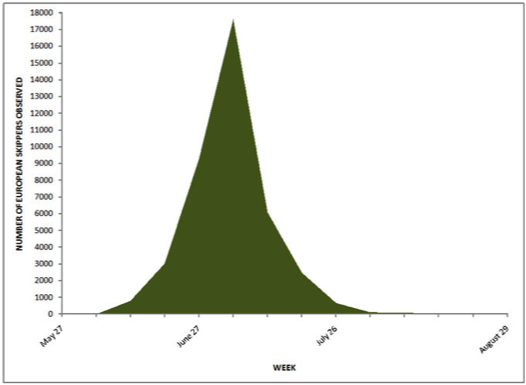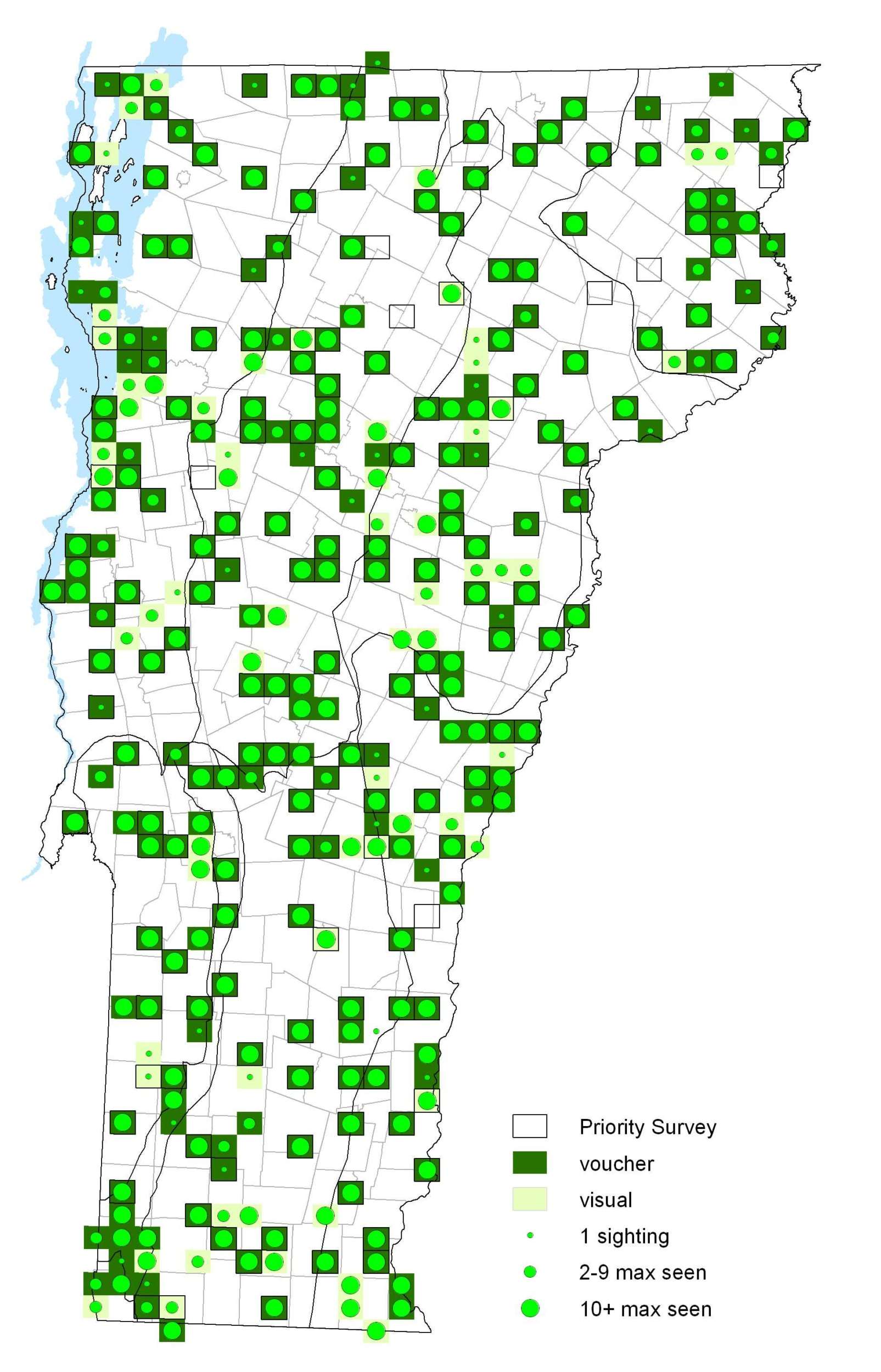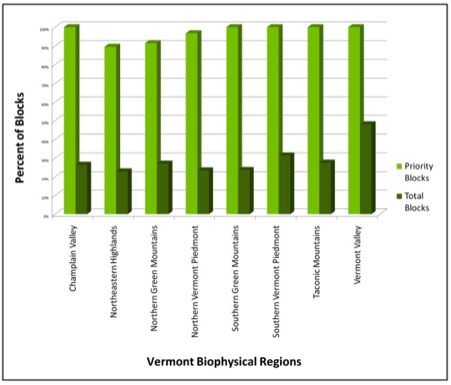|
Resident-Introduced Conservation Status North American Range |
A native to Eurasia, it was accidentally introduced in North America in 1910 in London, Ontario. It rapidly expanded its range 20 miles per year, probably aided at times by hay shipments containing eggs. The first known record for Vermont was 18 June 1979 in Burlington (T. Jones).
Females lay their eggs in long stringy clusters on their hostplant; the eggs overwinter and hatch the following spring. In Vermont, it is not uncommon for the European Skipper to outnumber all other species combined in and around hay fields during their peak flight period.
Identification
Very small. Wings are brassy burnt orange; upperside of both wings with black borders and black on the outer portions of the veins. The male forewing has a narrow black stigma. A pale form (T. l. pallida) is very rare.
Flight
A relatively short but hyperabundant flight, European Skippers can be found from early June through mid-July with numbers dropping precipitously by the end of July. In Vermont, they are gone by mid August. Extreme dates: 25 May 2005 in Grand Isle (D. Hoag) and 29 August 2007 in Jay (J. Hart).
Distribution and Habitat
Found in nearly every survey block during VBS in open, grassy meadows, hayfields, pastures, abandoned homesteads, damp fields, road edges and even gardens. Their host plants are grasses, mainly Timothy grass (Phleum pratense) and adults nectar from low growing flowers and seem to prefer those with high sugar content and also often introduced including; hawkweeds (Hieracium), thistles (Cirsium), milkweeds (Asclepias) and clovers (Trifolium) and others.







